

I could ramble on and on about the benefits of hiking: stress relief, physical fitness, fostering social connections, and enjoying nature, to name a few. It’s also a relatively cheap hobby that lets you explore interesting places near you without needing to travel. However, I’ll admit that hiking can be a miserable experience if you’re a hiking beginner who is not properly prepared.
In this guide to hiking for beginners, I’ll share with you everything you need to know to start hiking. I’ll cover essential tips on how to prepare for a hike, which should be helpful whether you’re a hiking beginner or more advanced.
I’ll start off by sharing the humble story of how I started hiking if you need a little encouragement, but feel free to jump straight to the hiking tips section.
If you’re contemplating making the transition to backpacking, check out my comprehensive beginner’s guide to backpacking!
How I Started as a Beginner Hiker


My Rocky Start as a Beginner Hiker
For many years I wanted to start hiking, but I was afraid to go alone and wasn’t able to convince any of my friends to join me. The few times I persuaded ex-boyfriends to accompany me the experiences were terrible, including hiking for hours in a torrential rainstorm. These incidents almost caused me to swear off hiking for good. Fortunately no accidents occurred, but our bad experiences could have been easily avoided had we understood how to plan and prepare for a hike.


Hiking as a Solo Female
A few years later I decided to give hiking another chance, this time as a solo female and in one of the places with the world’s worst weather, New Hampshire. I was borderline paranoid about safety, so I was extremely careful about planning my hikes.
Not surprisingly, my preparation paid off! I had amazing experiences in the mountains. Nearly every weekend, I continued to explore trails and progressed to backpacking as well. I still do the vast majority of my hikes solo, often in very remote areas. For that reason I am particular about thoroughly planning for a hike to ensure safety.
I’ve compiled the hiking tips I’ve gathered over the years and am excited to share them with you. Through sharing my story, I have two goals: (1) to inspire you to hit the trail, even if you’re solo, and (2) to empower you with the knowledge to hike safely and successfully.
How to Plan a Hike, Plus Tips for Hiking Beginners


Hiking for Beginners: How to Find a Hike
I usually use AllTrails to find hiking trails near me. I’ve used it both in the US and internationally. AllTrails has a variety of routes, ranging from urban walks to trails in more remote mountainous regions. Blogs, park websites, and your local hiking groups are also great resources for hiking trail guides!
Regarding hiking for beginners, I recommend selecting a shorter trail with an Easy or Moderate rating on AllTrails for your first hike. Select a trail with high reviews and ratings, as these often provide the best views relative to the effort exerted. Popular trails make for great beginner hikes since they are well-trodden and easier to follow. If a trail is situated within a national or state park, you may find additional guides and maps on the park’s official website.
Once you’ve chosen your hike, study the trail map well. I’ll sometimes check out the area in Google Earth, which gives me a great idea of what to expect on the trail.


Although uncommon, some highly popular hiking destinations may require permits, so it’s essential to plan in advance.
Before bringing your canine companion, check if dogs are allowed on the trail. Some parks have restrictions. If dogs are allowed, ensure you adhere to leash requirements. Make sure the terrain is suitable for their paws; I’ve seen bad cuts caused by rocky terrain. Also remember to responsibly clean up after them.
Evaluate Hiking Route Type
For the most part, hiking trails fall into two main categories: loop and out-and-back. For hiking beginners, out-and-back trails may be preferable because they allow you to turn around at any point in case of fatigue or bad weather.
Loop trails, while letting you experience more scenery, should be planned carefully. Ensure you start early enough to complete the entire loop and check trail conditions carefully. There’s nothing worse than nearing the end of a loop only to discover an impassable trail section, like a washed-out bridge.
Point-to-point trails are another option, but these require either public transportation or the use of two cars to get from one end to the other.


Estimate Hiking Time: How Long Will a Hike Take?
While the hiking time estimate provided on AllTrails is a good starting point, your actual time may vary based on factors like your experience level, trail elevation, current conditions, and the weight of your backpack. Hiking speed can range from as fast as 20 minutes per mile on flat, smooth terrain to 60 minutes per mile on steep ascents/descents or challenging terrain.
How to Calculate Hiking Time
- On easy terrain, allow 20 min per mile.
- On more difficult terrain, such as rocky mountain trails, allow 30 min per mile.
- On all types of terrain, add an extra 30 min for every 1000 ft of elevation gain.
- Remember that these times do not include breaks! For hiking beginners, you may need a little extra time.
How to Determine Trail Steepness
- 1000 ft elevation gain per mile is considered very steep.
- 500 ft elevation gain per mile will feel moderately inclined.
- Less than 500 ft elevation gain per mile will feel easy to moderate.
Various factors can make a hiking trail more challenging and time-consuming, including rock scrambling, steep ascents or descents, river crossings, muddy/wet trails, and unstable, rocky, or slippery terrain (e.g., scree, talus). You’ll get a sense of this when checking trail conditions (see below).


Hiking for Beginners: How to Check Trail Conditions
Reviewing the latest trail conditions is crucial for your safety. For example, you’ll want to know whether there is ice on the trail or if bridges have been washed out. It’s also important for your enjoyment (for example, knowing whether spring wildflowers or fall foliage are at their peak).
Checking trail conditions is especially important for trails at high elevation (>8,000 ft), where ice and snow can persist from fall through spring. Although hiking in winter conditions is possible with the right gear, trails that have already thawed out are better hikes for beginners.
My go-to place to check trail conditions is recent AllTrails reviews. For additional information, I like to reach out to the local ranger station responsible for the trail.
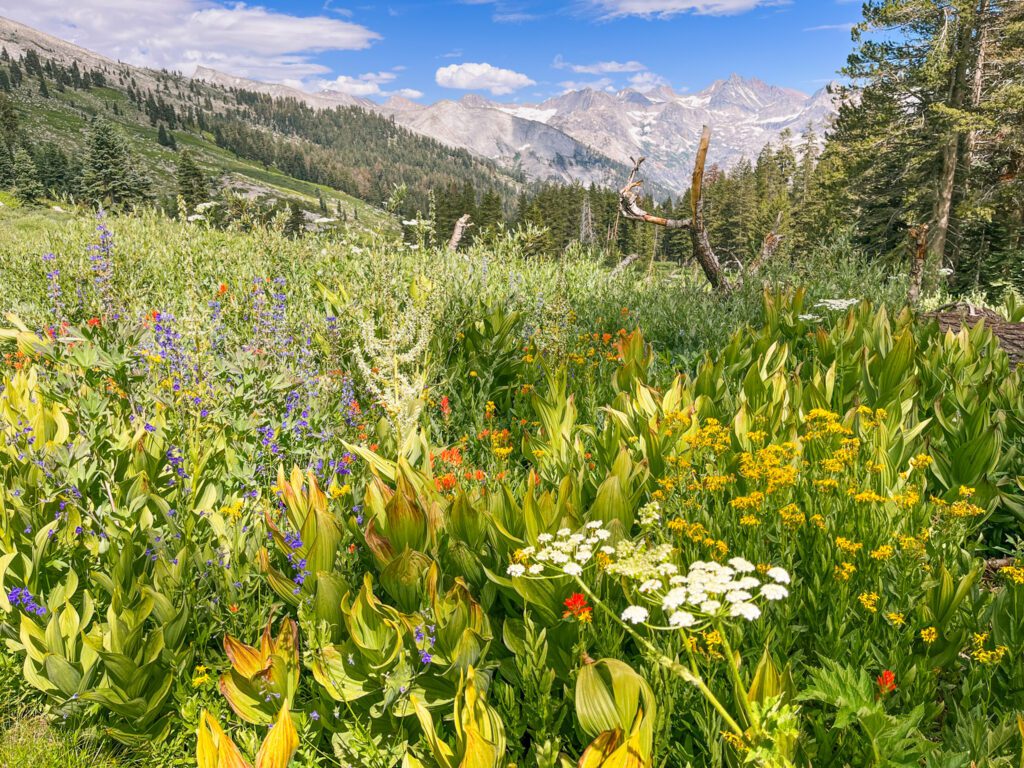

Check the Weather for Your Hike
One of the biggest mistakes made by hiking beginners (and I’m guilty of this) is not checking the weather right before heading out.
Mountain weather can change rapidly and differs significantly from that of nearby cities. Consult a mountain weather forecast in addition to the forecast for the nearest city to the trailhead.
If you anticipate significant elevation gain on your hike, keep in mind that temperatures will drop as you ascend. On average, expect a temperature decrease of approximately 5.4 °F for every 1,000 ft increase in altitude (metric: 1 °C per 100 m). Additionally, strong winds can contribute to a significantly cooler perceived temperature, so pack extra layers with you.


Although I’m pretty sure we’d all prefer sunny skies, hiking in the rain can be a unique and enjoyable experience if you’re well prepared. The sound of rain in the forest is quite peaceful! Make sure you’re prepared for a hike in the rain with waterproof shoes, rain pants, a rain jacket, and a backpack fitted with a rain cover. Trekking poles can also help with balance on slippery, wet surfaces.
While checking the weather also check what time the sun sets. This will help you plan what time you should turn around so that you can return to the trailhead before dark.
Prepare for Entrance Fees
Preparing for a hike includes being aware of any entrance fees for your selected hiking trail. Although many trails are free, some parking lots and parks require a small fee. A quick search on AllTrails or Google will usually tell you what to expect.
In many places, you’ll pay using an old-school process in the parking lot. You’ll fill out a form, then drop an envelope with cash or a check into a secure box. Carry a pen and small bills or checks in places where electronic payment may not be available.
If you’re hiking in a state park, check if your local library offers state park passes that you can borrow for free (this is possible in California).
For US National Parks, a yearly pass is $80. I think this is worth it considering that entrance to just one park often costs $35.


What to Pack for a Hike: Beginner’s Guide
One of the last things to do before a hike is packing your bag! Or, you can be like me and keep your bag fully packed in-between hiking trips.
To learn which hiking essentials to bring, as well as tips on how to shop for hiking gear, refer to my complete day hike packing list.
Quick tip: Bring at least 1 L water for every 2 hours you plan to hike.
Getting to the Hiking Trailhead
Before setting off, let someone know where you’re going and when you plan to return.
When driving to your hiking destination, keep in mind that some mountain roads may be closed seasonally (typically in winter but sometimes during spring and fall as well). Check current road conditions with local authorities.
Ensure your vehicle is suitable for the terrain leading to the trailhead, as roads can vary from paved to exceptionally rugged. This information is often available on AllTrails trail guides or in the reviews section on Google Maps.
Parking lots for popular hiking trails can fill up quickly. Be aware that in some areas, parking on the roadside is prohibited when lots are full. Have a backup trail in mind in case this happens. Arriving early is always a good idea to beat crowds, avoid summer heat, and ensure you have enough time to finish a hike before sunset.
In regions with bears, hiking parking lots may provide bear boxes. Don’t leave food and scented items in your car, and remember to pick them up when you leave!


Following the Trail
When starting your hike, switch your phone to airplane mode to preserve battery life. Take a portable charger with you as well.
If you’ve chosen a good beginner hiking trail, it should not be too difficult to navigate. Make sure you have a reliable GPS guide, a paper map, or ideally, both.
Keep an eye out for trail markers, including cairns (rock piles), blazes painted on trees, and signs. Consult your hiking map when you reach forks in the trail, and stay on the trail to prevent erosion in fragile areas.
Take advice from other hikers with a grain of salt and be confident in your own navigational abilities. I’ve gotten very insightful tips from fellow hikers, as well as outright absurd ones. A hiker once told me not to continue further on the trail because it was extremely steep and impassable. I disregarded his advice and found the trail to be perfectly manageable.
I frequently receive well-meaning but inaccurate navigation information from unprepared hikers. Unfortunately, being a solo woman seems to make me a target for unsolicited advice. Always trust your own judgment first.
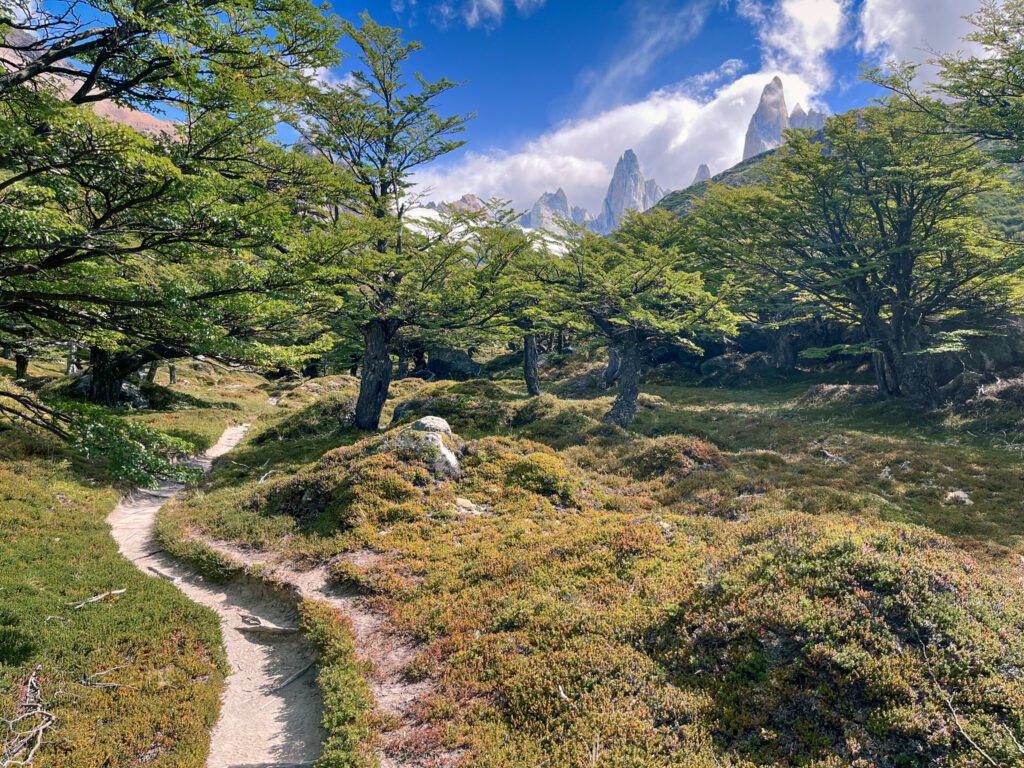

Hiking for Beginners: Safety Tips and Hazards to Know
If you’re a hiking beginner, don’t be afraid to turn around if you feel unsafe. Your safety and well-being are most important, and hikes can always be re-attempted under better conditions. I’ve listed some common hazards and how you can avoid them below.
Climate Conditions
- Sun: Guard against sunstroke and sunburn in hot, unshaded areas. Carry sufficient water and sun protection.
- Cold: Beware of hypothermia, especially if your hiking clothing gets wet. Carry a rain jacket and wear moisture-wicking layers.
Altitude
- Altitude sickness can occur above 8,000 ft (~2,500 m).


Flora & Fauna
- Wildlife: Familiarize yourself with potentially hazardous wildlife (e.g., bears, snakes) and know how to handle encounters.
- Plants: Be cautious of plants like poison oak that can irritate and burn your skin.
- Insects: Wear loose, long layers and use bug spray to prevent insect bites and disease transmission from ticks and mosquitoes.
Natural Threats
- Rockslides: Avoid stalling or taking breaks in trail sections prone to rockslides.
- Rivers: Exercise caution when crossing fast-flowing rivers. Look for safer crossing points upstream or downstream, use hiking poles, and don’t hesitate to turn back.
- Storms: Carry rain gear and an extra layer of clothes.
Injuries
- Prepare your body for hiking: Train your muscles to avoid common injuries. Start with beginner hiking trails and work your way up to more challenging ones.
- Carry a first aid kit and Garmin inReach. Consider subscription services that reduce your liability for search and rescue costs.
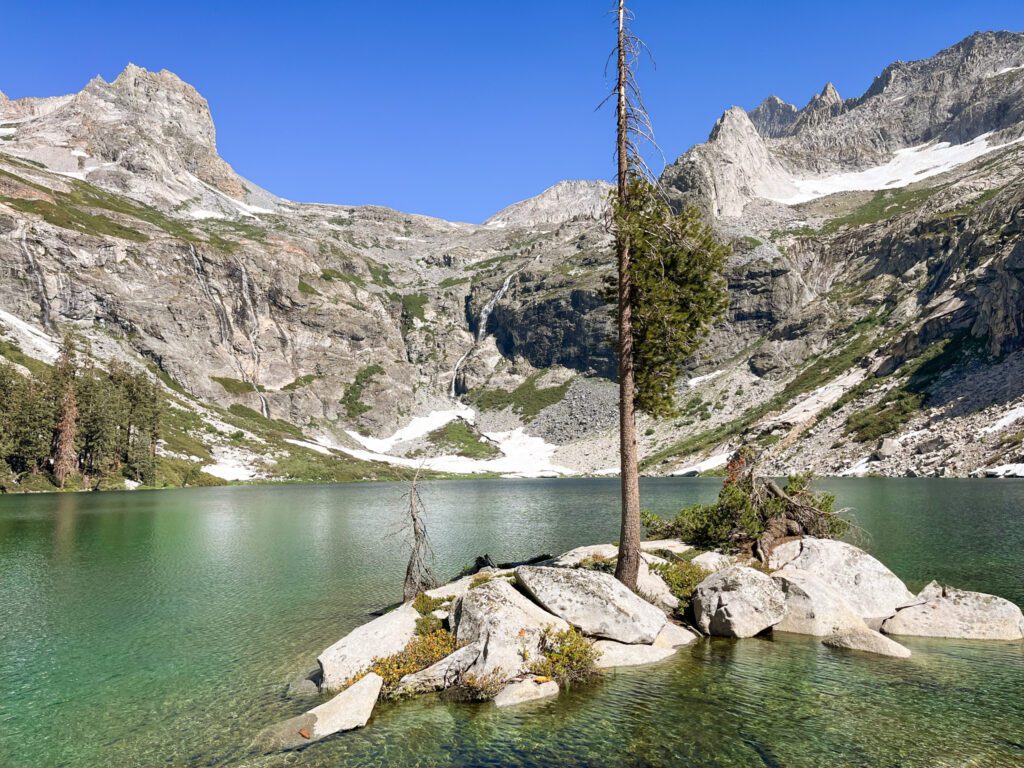

Hiking for Beginners: Trail Etiquette
When hiking, please be considerate and share the trail with others. When taking a break, move off the trail to allow others to pass. These are the guidelines for passing on the trail:
- Uphill hikers have the right of way over downhill hikers.
- Hikers have the right of way over bikers (I usually just let them pass because they are going much faster).
- Horses have the right of way over hikers.
When in doubt, it’s always courteous to give the other party the right of way.
Leave No Trace
Always practice Leave No Trace to preserve the beauty of hiking areas. Whether you’re a beginner hiker or just need a refresher, here are the 7 Principles of Leave No Trace:
- Plan ahead and prepare.
- Travel and camp on durable surfaces. Stay on the trail and don’t take shortcuts through switchbacks.
- Dispose of waste properly. Don’t leave any trash (including fruit peels and toilet paper) behind, and make sure you know how to go to the bathroom in the wilderness.
- Leave what you find.
- Minimize campfire impacts.
- Respect wildlife.
- Be considerate of other visitors. Don’t make loud noise or play music from speakers.
Plan for After Your Hike


After your first hike, celebrate by finding a local brewery or cozy eatery to savor a well-deserved meal. Keep an eye out for interesting places along the drive home back from the trailhead. Mountain areas are full of scenic spots like waterfalls.
If you’re a considerable distance from home, consider staying overnight nearby. Many popular hiking areas offer unique accommodations, such as mountain cabins or glamping sites. Begin your search here.
Prioritize proper recovery after your hike. I find that using a foam roller on my legs immediately after a hike minimizes any soreness.
Bonus: Tips for Solo Hiking Beginners (Solo Female Hikers too!)


#1 Tip for Solo Hikers: Confidence
My primary tip for solo hiking is to just go for it. I waited YEARS to start hiking because I had nobody to join me and was afraid of hiking alone, and I regret not starting sooner. If you’re a solo female, rest assured – you won’t be the only one on the trail. I encounter many solo female hikers every time I’m on the trail!
All of the hiking tips I’ve shared thus far are relevant to hiking alone, but I’d like to emphasize the following:
- Don’t attempt a challenging and remote hike if you’re a beginner solo hiker. Start with a popular and easier trail.
- Inform someone of your hiking plans and estimated return time.
- Consider hiking with a Garmin inReach for peace of mind. The device functions in remote places without service, sending your GPS coordinates and calling for help in emergency situations. These are very popular among solo hikers.


Additional Considerations for Solo Hiking
If you’ll miss having someone to talk with when hiking solo, bring a book to read during your lunch break. Take along headphones and pre-downloaded music as long as they don’t distract you from being aware of your surroundings.
While joining a group might seem safer, it isn’t always the case. In several group hikes I’ve done, certain members compromised the safety of the entire group due to their lack of preparation (insufficient water, inappropriate clothing, etc.).
If you’re well-prepared for a hike, there’s no reason to feel unsafe when hiking alone. However, if the idea of solo hiking still makes you uncomfortable, explore local Facebook and Meetup hiking groups. They frequently organize trips, from beginner hiker to advanced levels, providing an excellent opportunity to connect with like-minded individuals.
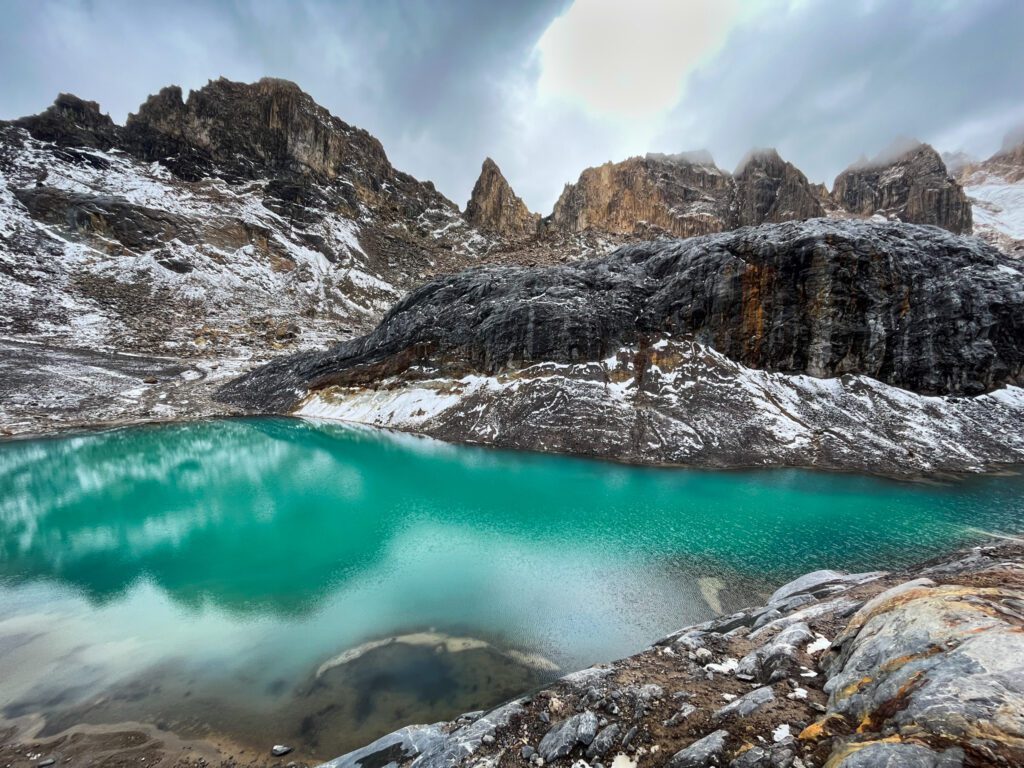

Thanks for reading! I hope this guide to hiking for beginners and essential hiking tips were helpful to you. What questions do you have about hiking? Let me know your questions and thoughts in the comments. See you on the trail!
Head to my Hiking and Camping Page for more tips, trail guides, and hiking inspiration.
Confirm all logistical and safety information before your trip. Also If you buy through links on this site, I may earn an affiliate commission. Thanks for supporting me in creating free content for you to enjoy!
Save this post for later and share on Pinterest!
HIKING TRIP RESOURCES
Head to my Travel Resources Page for more recommendations.
Hiking Checklist and Backpacking Checklist. Make sure you have everything you need before heading out.
Viator and Get Your Guide. If you don’t want to hike or camp alone, there are various organized tours you can join, ranging from day trips to multi-day excursions.
Booking.com. This is my go-to platform for booking accommodation since it consistently gives me competitive prices and additional discounts based on usage.
LifeStraw. This easy-to-use water filter guarantees that you always have access to clean drinking water.
Travel Credit Card. Earn substantial points for travel-related expenses and a very generous bonus when opening an account.
Comments




Hi, I’m Kristina! I’m a solo female traveler sharing my personal experiences around the world. Authentic travel is important to me; in my destination guides I emphasize not just the most spectacular sights but also the local stories and history.
Other things I’m passionate about are discovering hidden gems, budget-friendly travel, and hiking and backpacking. My goal is to show you how to seek adventurous experiences for yourself!

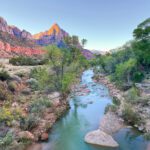
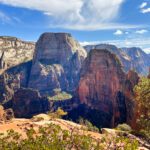

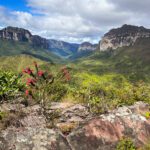
Leave a Comment